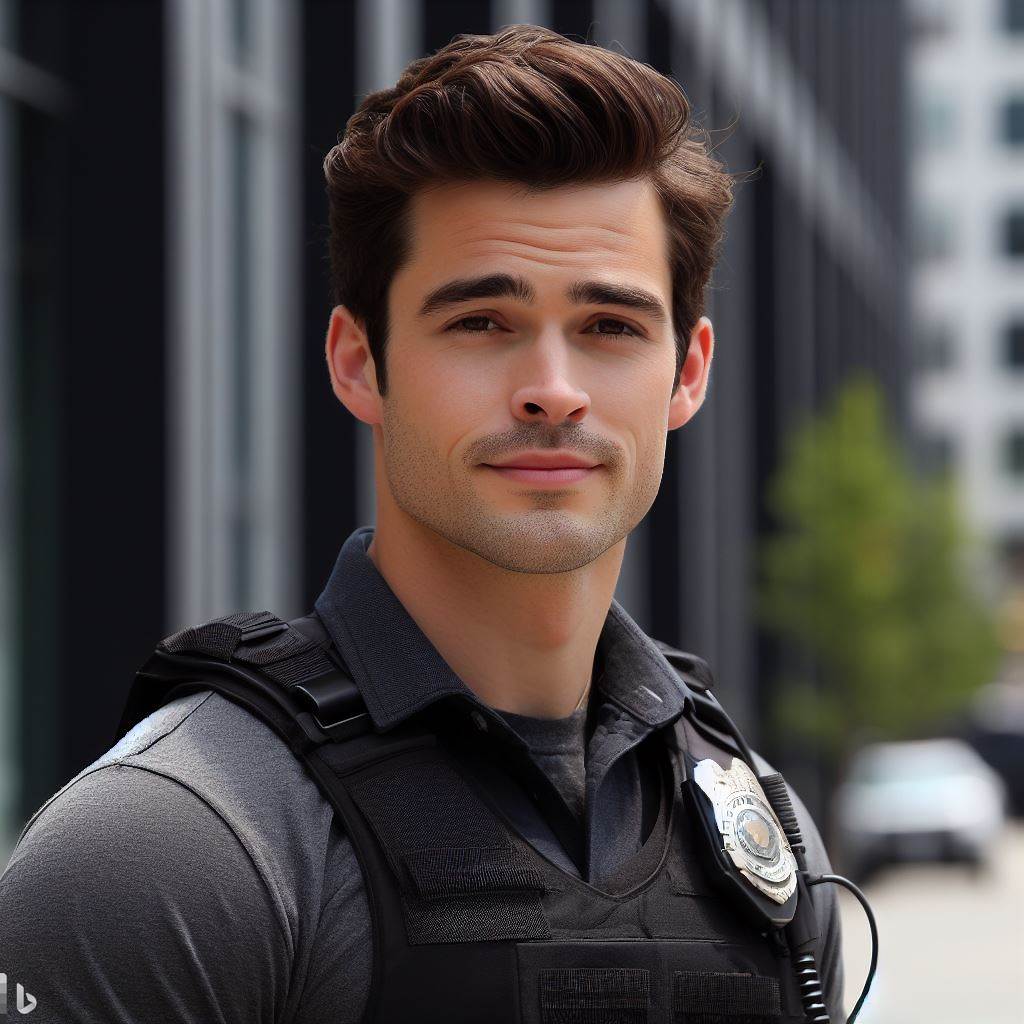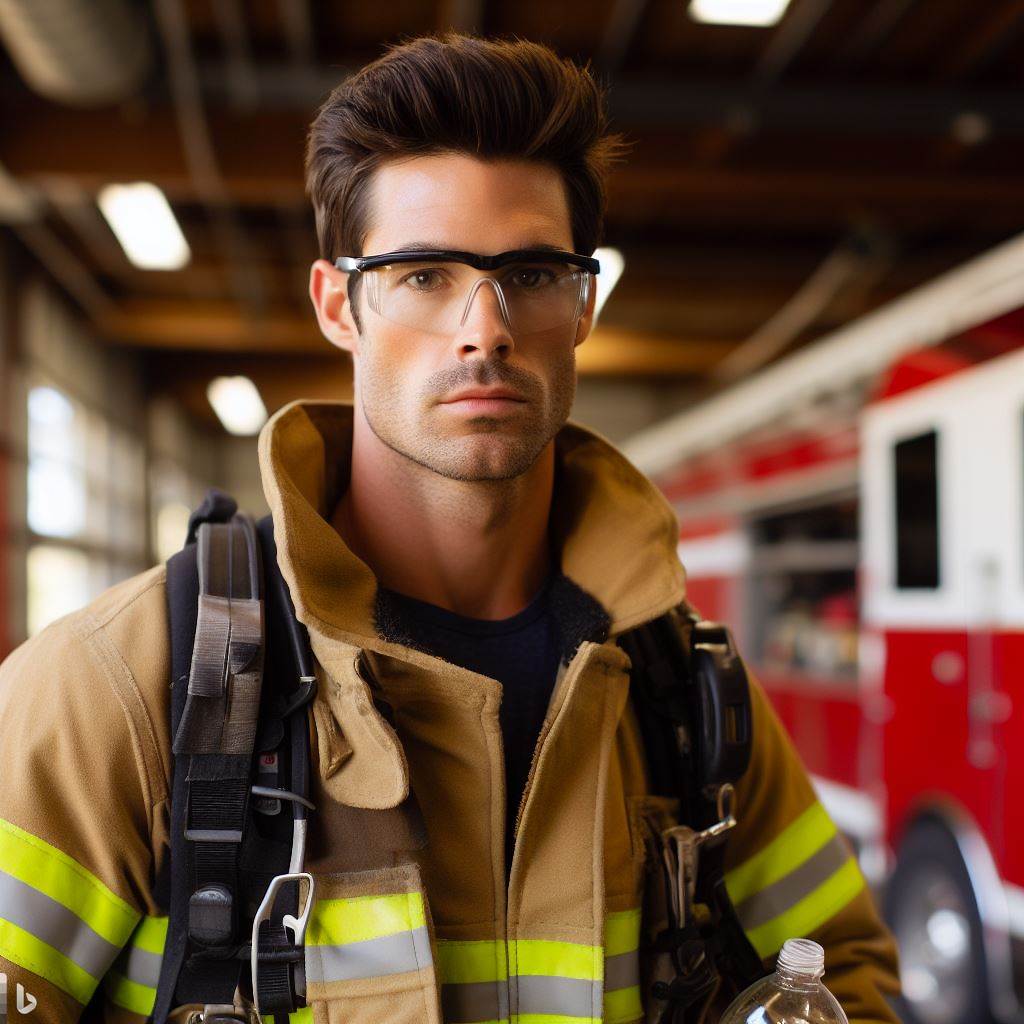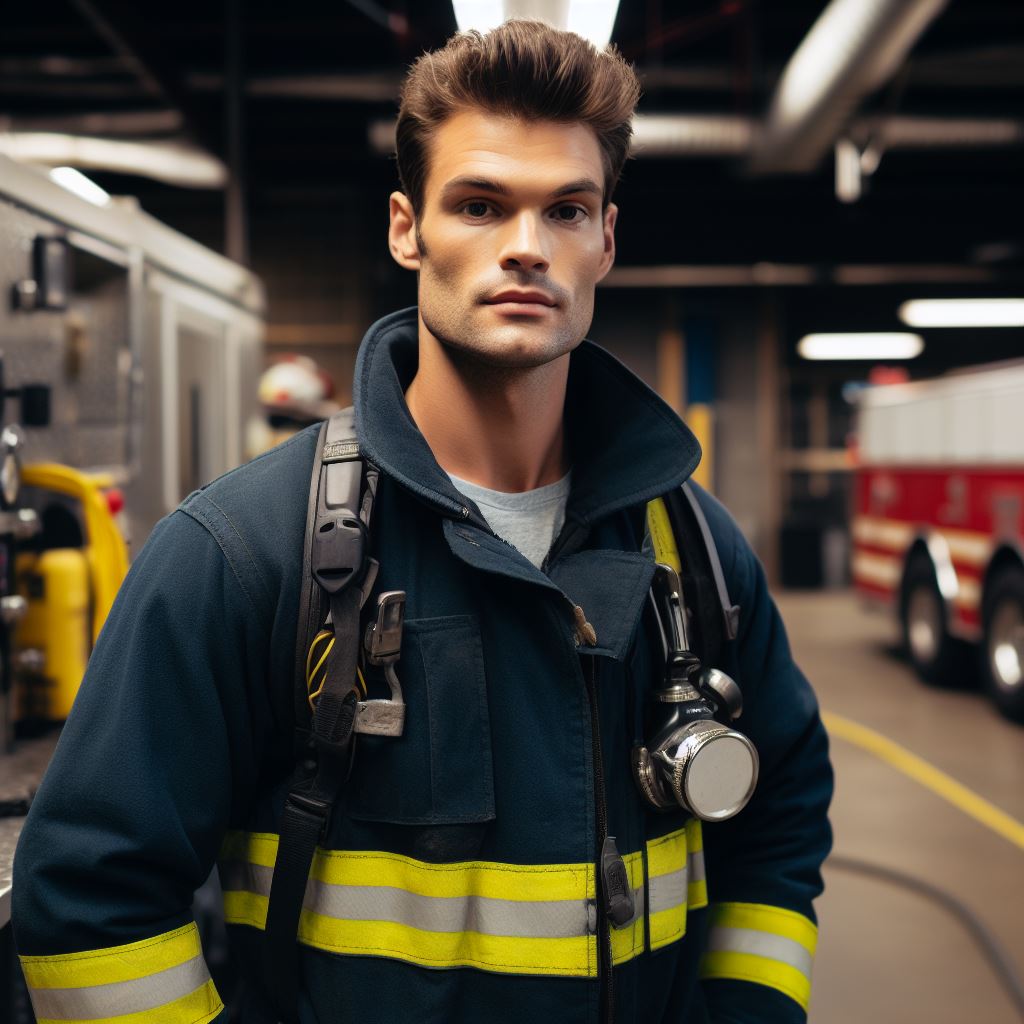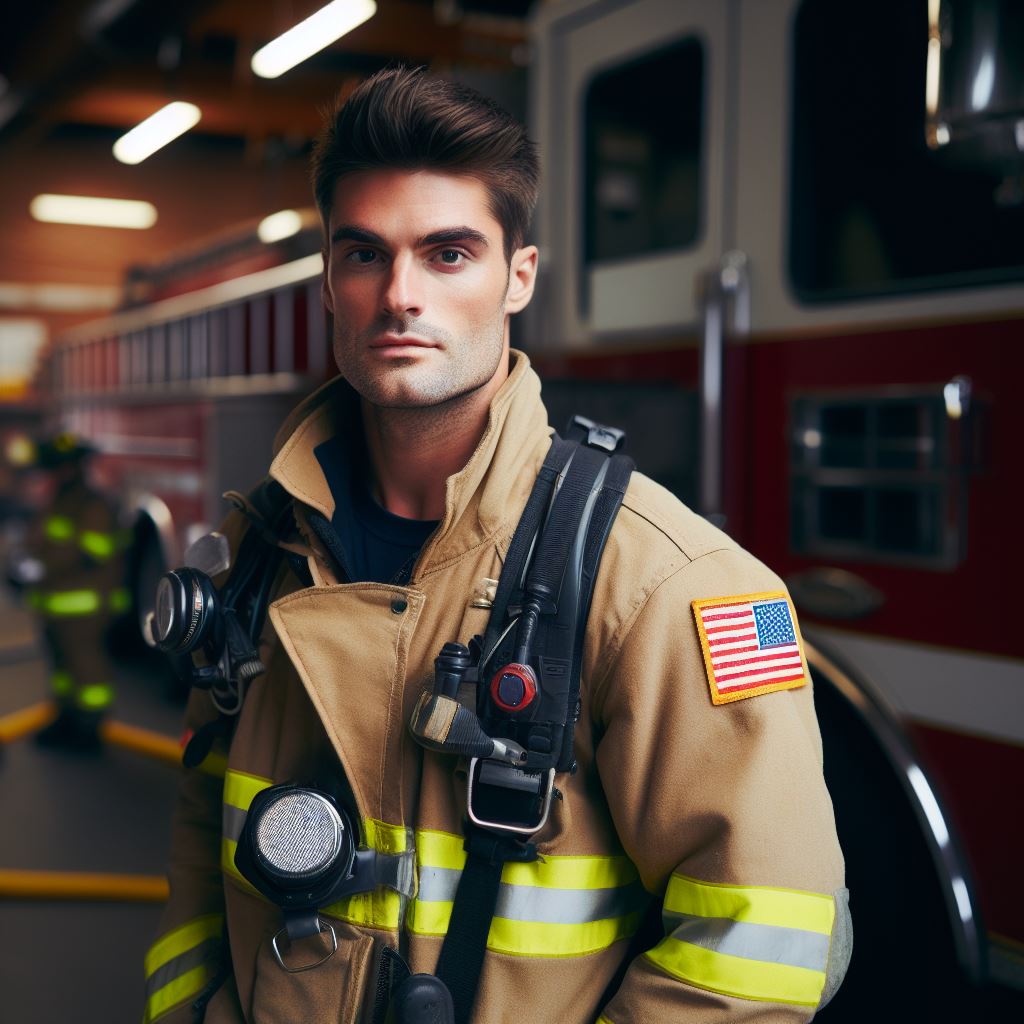Introduction
Importance of police officer safety
Police officer safety is of utmost importance in ensuring the well-being of law enforcement personnel.
The purpose of this blog post is to discuss the gear, training, and best practices for police officer safety.
Ensuring the safety of police officers is essential for maintaining law and order within communities.
Police officers put their lives on the line every day to protect and serve, making it crucial to provide them with the necessary tools and training to keep themselves safe while performing their duties.
This blog post aims to shed light on the importance of police officer safety and highlight the various aspects that contribute to it.
From protective gear to comprehensive training, every element plays a vital role in ensuring the safety and well-being of our law enforcement officers.
A significant part of police officer safety is the selection and utilization of proper gear.
This includes protective clothing, such as bulletproof vests and helmets, as well as tools like tasers and non-lethal weapons.
The right gear can significantly mitigate risks and safeguard officers in dangerous situations.
Training also plays a critical role in officer safety. Police departments must provide regular and updated training programs that encompass situational awareness, self-defense tactics, and de-escalation techniques.
Ongoing training allows officers to adapt to evolving threats and challenges, ensuring they are well-prepared to handle any situation they may encounter.
In addition to gear and training, implementing best practices is crucial.
This involves promoting a culture of safety within police departments, encouraging open communication, supporting mental health initiatives, and prioritizing officer resilience and wellness.
In general, police officer safety is paramount for maintaining a secure environment for both law enforcement personnel and the communities they serve.
By prioritizing comprehensive gear, training, and best practices, we can contribute to a safer working environment for our police officers.
Read: Top U.S. Military Bases: Key Locations & Their Importance
Gear for Police Officer Safety
In the demanding and often dangerous field of law enforcement, ensuring the safety of police officers is of utmost importance.
To achieve this, the proper gear and equipment must be utilized, and officers must be adequately trained in their use.
Bulletproof vests
- Different types and levels of protection: Level I, Level II, Level III, etc.
- Proper fit and maintenance essential for effectiveness and longevity.
One of the most vital pieces of gear for police officer safety is the bulletproof vest. These vests come in different types and levels of protection, ranging from Level I to Level III and beyond.
The type of vest chosen depends on the specific needs and potential hazards faced by officers in different environments.
In addition to selecting the appropriate level of protection, proper fit and maintenance of bulletproof vests are essential.
Ill-fitting vests can hinder movement and cause discomfort, impacting an officer’s ability to respond swiftly in critical situations.
Regular inspection and maintenance help ensure that the vests remain effective throughout their lifespan.
Duty belts and equipment
- Essential items to carry: firearm, handcuffs, radio, baton, pepper spray, etc.
- Proper positioning and accessibility allow for quick response during dangerous situations.
Duty belts carry essential equipment that officers need to have readily accessible at all times. These items include firearms, handcuffs, radios, batons, pepper spray, and more.
Proper positioning of the duty belt is crucial to allow for easy access to these tools in high-stress situations.
Officers must be trained in the correct placement and securing of their duty belts to avoid accidental dislodging or hindrance during physical encounters.
The positioning should also take into account individual officer preferences and body types to maximize comfort and effectiveness.
Personal protective gear
- Helmets, gloves, and eyewear provide additional protection from head, hand, and eye injuries.
- They play a crucial role in ensuring the safety of police officers in various situations.
In addition to bulletproof vests and duty belts, officers also rely on personal protective gear to enhance their safety.
Helmets, gloves, and eyewear provide extra protection against head, hand, and eye injuries that may occur during altercations or hazardous situations.
Wearing helmets can reduce the risk of head injuries from falls or projectile impacts, while gloves protect against cuts and bruises.
Proper eyewear safeguards officers’ eyes from debris, chemicals, or the glare of bright lights. Together, these pieces of gear play a crucial role in minimizing potential harm.
In addition, the proper gear is indispensable for ensuring the safety of police officers.
Bulletproof vests, duty belts, and personal protective gear all serve specific purposes in safeguarding officers during their challenging daily tasks.
By providing adequate training and emphasizing the importance of regular maintenance, departments can equip their officers with the tools they need to protect themselves while serving their communities.
Read: The Training Rigor: Preparing for Combat & Peacekeeping
See Related Content: Earning Potential: Detective Salaries Across US States
Training for Police Officer Safety
Training is an essential component of police officer safety. It equips officers with the necessary skills, knowledge, and physical abilities to handle various challenges they may face while on duty.
Physical fitness and conditioning
- The Importance of Staying Fit
- Physical fitness is crucial for police officers as it enhances their overall performance and safety on duty.
- Training Programs and Exercises
- Police departments provide various training programs and exercises to maintain and improve the
officer’s physical fitness and conditioning.
Physical fitness and conditioning are crucial for police officers as they are often required to perform physically demanding tasks.
Maintaining physical fitness helps officers stay alert, react quickly, and reduce the risk of injuries. It is essential for officers to engage in regular exercise routines and maintain a healthy lifestyle.
Transform Your Career Today
Unlock a personalized career strategy that drives real results. Get tailored advice and a roadmap designed just for you.
Start NowPolice departments offer training programs specifically designed to improve physical fitness. These programs include a combination of cardiovascular exercises, strength training, and flexibility exercises.
Officers are encouraged to participate actively in these programs to enhance their stamina, strength, and flexibility to perform their duties effectively.
Defensive tactics and self-defense
- Techniques for Subduing Suspects
- Police officers are trained in various defensive tactics to safely restrain and subdue suspects without causing unnecessary harm.
- Proper Use of Force and De-escalation
- Training includes teaching officers how to assess a situation and apply appropriate force levels, emphasizing de-escalation whenever possible.
In addition to physical fitness, police officers receive training in defensive tactics and self-defense techniques.
These techniques are crucial for officer safety when dealing with potentially dangerous situations.
Officers are taught how to restrain suspects using appropriate methods that minimize injuries to both parties involved.
Proper use of force and de-escalation techniques are also emphasized in training programs.
Officers are trained to assess a situation and use the necessary level of force required to control it.
De-escalation strategies are taught to defuse tense situations and minimize the need for force whenever possible.
Tactical training
- Handling Different Scenarios
- Police officers undergo intensive tactical training to prepare them for a variety of real-world scenarios they may encounter on duty.
- Team-based Training Exercises
- Training often involves team-based exercises to enhance coordination and communication among officers when dealing with high-risk situations.
Tactical training is another vital aspect of officer safety. Police officers are exposed to a range of realistic scenarios in training to enhance their decision-making abilities and response skills.
They learn how to handle situations involving armed individuals, hostage scenarios, and other high-risk events.
Team-based training exercises foster cooperation and effective communication among officers. In high-risk situations, teamwork is essential to ensure the safety of all involved parties.
These exercises help officers develop trust, enhance coordination, and effectively work together to handle complex situations.
In the end, training plays a crucial role in ensuring the safety of police officers.
Prioritizing physical fitness, teaching defensive tactics, and providing tactical training equips police officers with necessary skills to handle on-duty situations effectively.
Read: Women in the U.S. Military: Breaking Barriers & Traditions

Uncover the Details: Career Advancement Paths for Security Guards in the USA
Best Practices for Police Officer Safety
Ensuring the safety of police officers is crucial for maintaining law and order in any community.
Implementing best practices can significantly minimize risks and enhance officer effectiveness. This section discusses key practices that promote officer safety.
Situational awareness
- Be alert and observant to your surroundings at all times.
- Identify potential threats, such as suspicious activities or individuals.
To enhance officer safety, situational awareness plays a vital role. Being alert and observant should become second nature for every officer on duty.
By staying vigilant, officers can identify potential threats more effectively.
Additionally, the ability to assess situations accurately and make sound judgments is essential for officer safety.
Identifying potential threats, such as recognizing suspicious activities or individuals, is crucial for preventing dangerous situations from escalating.
Communication skills
- Master effective radio communication techniques to relay information accurately and efficiently.
- Interact with the community to build trust, gather crucial information, and prevent crime.
Effective communication is another fundamental aspect of police officer safety. First, officers must master radio communication techniques to ensure clear and efficient information exchange.
In high-pressure scenarios, transmitting accurate details promptly can be a matter of life or death.
Furthermore, building strong relationships with the community is essential.
Interacting with community members helps officers gain their trust, garner valuable information, and establish a cooperative environment. This collaboration fosters crime prevention and enhances officer safety.
Mental health and stress management
Policing presents various challenges that can take a toll on an officer’s mental health and well-being.
Acknowledging and addressing these challenges are crucial for maintaining officer safety.
- Cope with the challenges of the job, such as exposure to trauma and high-pressure situations
- Seek support and resources, including therapy or peer counseling, to maintain a healthy mindset.
First, officers must develop effective coping mechanisms to deal with the emotional and psychological demands of the job.
Exposure to traumatic incidents and high-pressure situations can lead to stress, anxiety, and post-traumatic stress disorder (PTSD).
Implementing strategies such as debriefing sessions and self-care activities can help officers manage these challenges more effectively.
Additionally, seeking support and utilizing available resources is essential.
Police departments should provide access to mental health services, including therapy or counseling, as well as resources for stress management and resilience training.
Encouraging officers to seek help without fear of stigma or judgment is crucial for maintaining their well-being and, consequently, their safety.
In review, prioritizing police officer safety requires the implementation of best practices that promote situational awareness, effective communication skills, and mental health and stress management strategies.
By being alert, communicating effectively, and nurturing their mental well-being, officers can enhance their safety while serving their communities.
Read: Military Technology: Tools of the Modern American Soldier
Conclusion
Main points
Throughout this blog section, we have explored the crucial aspects of police officer safety: gear, training, and best practices.
We have highlighted the importance of equipping officers with the right protective gear and ensuring its regular maintenance.
Training is another essential component, and we discussed the significance of continuous training programs that focus on physical fitness, situational awareness, de-escalation techniques, and self-defense tactics.
Transform Your Career Today
Unlock a personalized career strategy that drives real results. Get tailored advice and a roadmap designed just for you.
Start NowImportance of continuous training and improvement in officer safety
Continuous training and improvement are vital for officer safety, as they enhance skills, promote critical thinking, and adaptability in dynamic situations.
Police departments must invest in regular training sessions to keep their officers prepared and updated.
Final thoughts and call to action for readers to prioritize officer safety
In short, officer safety should always be a top priority for law enforcement agencies and communities alike.
By prioritizing the provision of necessary gear and continuous training, we can ensure the safety and well-being of our law enforcement officers.
We urge readers to recognize the sacrifices made by these brave officers and support initiatives that enhance their safety.
Together, let us create an environment where officers can carry out their duties with the utmost confidence and protection.
[E-Books for Sale]
The Big Book of 500 High-Paying Jobs in America: Unlock Your Earning Potential
$19.99 • 500 High-Paying Jobs • 330 pages
Explore 500 high-paying jobs in America and learn how to boost your career, earn more, and achieve success!
See All 500 High-Paying Jobs of this E-Book
1001 Professions Without a Degree: High-Paying American Jobs You Can Start Now
$19.99 • 1001 Professions Without a Degree • 174 pages
Discover 1001 high-paying jobs without a degree! Unlock career tips, skills, and success strategies for just $19.99!




